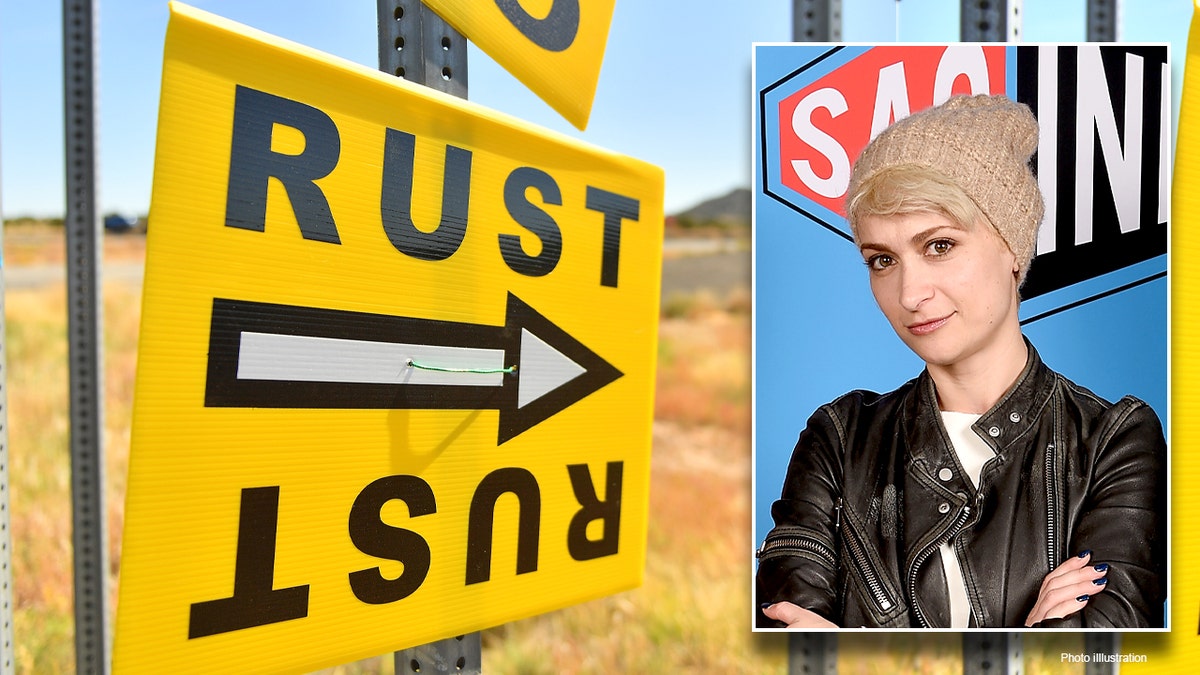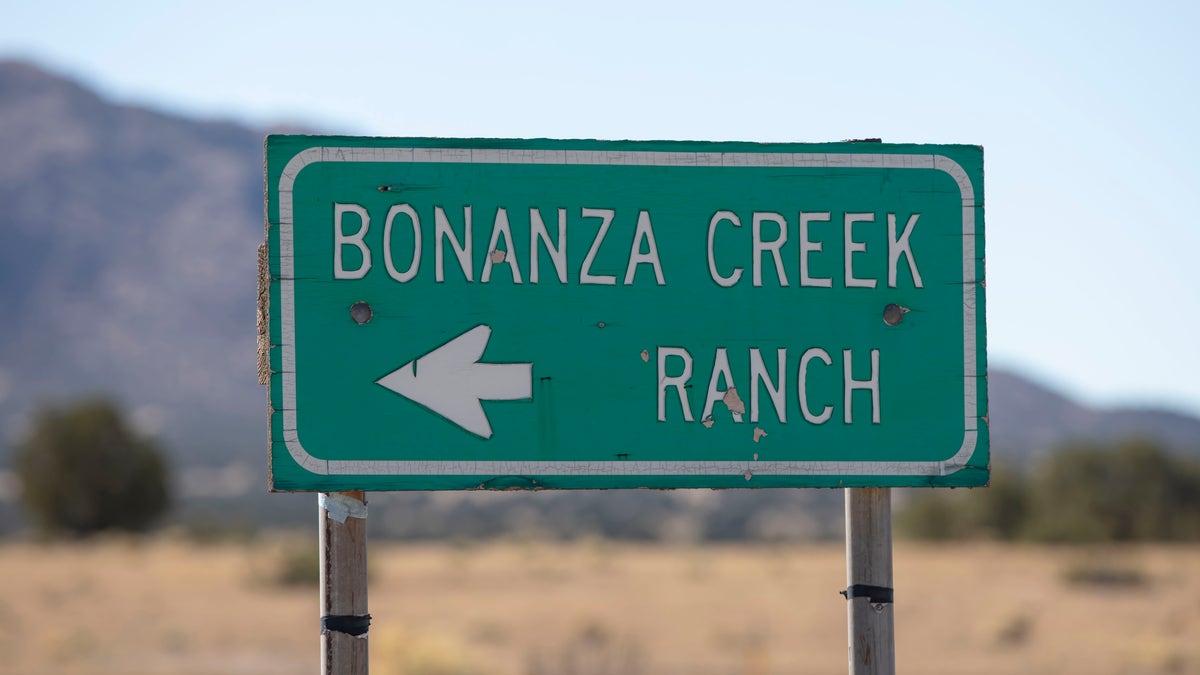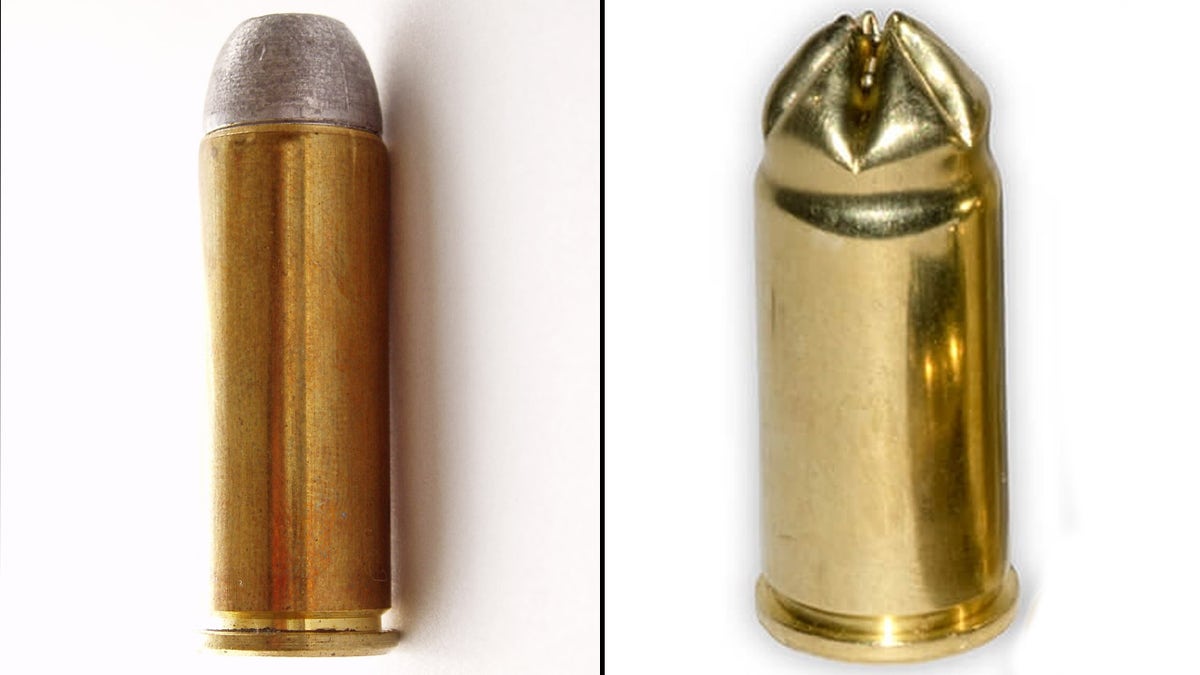Armorer demonstrates how to identify a dummy round
Dummy rounds on film and TV sets generally look identical to real ones, experts say. A visual inspection isn’t enough according to armorer Bryan Carpenter, but they make a distinguishing rattling sound when shaken.
ALBUQUERQUE, N.M. – "Rust" producer and star Alec Baldwin fatally shot cinematographer Halyna Hutchins and wounded director Joel Souza in an on-set accident in Santa Fe, New Mexico, last month that shocked the film industry and much of the country.
An investigation into the incident is ongoing, focusing on at least two of the three people believed to have handled the weapon before Baldwin picked it up to rehearse a scene in a New Mexico church on Oct. 21. They are armorer Hannah Gutierrez Reed and first assistant director David Halls.
On the morning of the incident, according to Gutierrez Reed’s attorney Jason Bowles, the 24-year-old armorer visually inspected the dummies and shook them before loading them into the revolver that ultimately wound up in Baldwin’s hands.

A sign directs people to the road that leads to the Bonanza Creek Ranch where the movie ‘Rust’ was being filmed. Director of Photography Halyna Hutchins was killed and director Joel Souza was injured on set while filming the movie ‘Rust’ at Bonanza Creek Ranch near Santa Fe, New Mexico on October 21, 2021. (Photo by Sam Wasson/Getty Images | Photo by Fred Hayes/Getty Images for SAGindie)
"She spun the cylinder for David and showed him each of the six rounds during that spinning process, inside the firearm," Bowles said. "She then handed the firearm to David, who took custody of it."
After that, Halls went into the church, and allegedly handed it to Baldwin, telling him it was "cold," or safe. But as the A-list star practiced a cross-draw technique, a live round went off, striking both Hutchins and Souza.
According to court documents, investigators found four dummy casings in the revolver, with holes in the side, and recovered another that may have ejected a bullet.
"David Halls picked up the firearm from a pew inside the church and took it to the armorer," a search warrant reads. "Hannah was then told to ‘open up’ the gun so he could see what was inside. David advised he could only remember seeing at least four ‘dummy’ casings with the hole in the side, and one without the hole. He advised this round did not have the ‘cap’ on it and was just the casing."

The Bonanza Creek Ranch where the movie Rust was filmed ©Sven Doornlkaat/Backgrid for Fox News Assignment
Blank ammunition has a distinctive look: a crimped or wadded tip instead of a bullet. But dummy rounds are supposed to be stand-ins for real bullets, inert but identical or nearly identical.
"You know, it's the most concerning thing to me when I'm on set because they are intentionally made to look identical to a live round," Bryan Carpenter, a longtime armorer whose recent work includes USA Network’s "Queen of the South," told Fox News Digital.
Depending on the manufacturing process, some have a hole in the casing. High-end dummies don’t, according to Carpenter.
‘RUST’ MOVIE BUDGET AND SALARIES REVEALED
Santa Fe deputies said they recovered a mix of blank rounds, dummies and real bullets from the set after the accidental shooting.
"You have to go through and just be ultra, mega careful with these things — because they look identical," Carpenter stressed.
He told Fox News Digital that the practical way to be sure a round is a dummy and not real is to shake it and listen for the distinct sound of B.B.s rattling inside.
"The only way to actually identify if a round is a dummy round or not is to physically have it in your hand and physically shake it," he said. "That's it. Period. I mean, there's literally no other way to do it."
ALEC BALDWIN ‘RUST’ SHOOTING WARRANTS SUGGEST VIOLATIONS OF INDUSTRY GUN SAFETY STANDARDS
Gutierrez Reed said she even had concerns about loading distinctive-looking blanks into prop guns in a September interview with the podcast "Voices of the West." That part is the "scariest thing to me," she said.
"You have to like look at the front of it and determine which one is the blank, if it’s dummied up," she said. "That’s how I tell at least. Every movie I’m learning new and new things — it’s all very quick."
Blanks are used to simulate the firing of a live bullet with a muzzle flash, recoil and bang. Dummies are meant to look like bullets but don’t fire, useful in Old West movies in which the camera can see into a revolver’s cylinder.
"If it's really high quality, when they take the primer out and replace it with a solid piece of brass, they empty all the gunpowder, clean all the inside out, make sure there’s no gunpowder, and they put B.B.s inside the casing and then put the projectile back and crimp it closed," Carpenter said. "So now what you do is you shake that round, and you can hear and feel those B.B.s shaking around in there."
ALEC BALDWIN AND WIFE HILARIA DINE IN VERMONT BAR CLOSED TO PUBLIC AS ‘RUST’ PROBE PICKS UP STEAM
Bowles, one of Gutierrez Reed’s lawyers, said that in his understanding, some dummy rounds don’t make that distinctive rattling sound.
"It is highly depending on the manufacturing process of them and where they came from," he said. "What I’ve seen is that dummy rounds are made to mimic live rounds. Some have holes in the side of the cartridge, and some do not."
He was unable to confirm what type or types of dummies were used on the "Rust" set and said that information would likely come from investigators later on.

An aerial view of the film set on Bonanza Creek Ranch where Hollywood actor Alec Baldwin fatally shot cinematographer Halyna Hutchins (Reuters)
CLICK HERE TO SIGN UP FOR OUR ENTERTAINMENT NEWSLETTER
To Bowles’ knowledge, Halls did not perform a secondary inspection himself in front of Gutierrez Reed.
"But I can’t speak to what he may have done inside the church," he added.
Carpenter said just spinning the cylinder isn’t thorough enough.
On his sets, he said, he has a thorough routine for checking a weapon before it's used for a scene or rehearsal. First, he checks the barrel with a flashlight to make sure it’s clear of obstructions. Next, he makes sure the gun is unloaded. Then he would have six dummies, which he’d already checked multiple times before bringing them to the set, and re-check them one at a time in front of the first assistant director, who gives each one a second inspection before they are loaded into the weapon one at a time.
"This is normal," Carpenter said. "This is not something extreme. … No, this is just the way it's done."
Gutierrez Reed previously through her attorneys blamed the low-budget movie’s producers for rushed conditions that created unnecessary safety risks.

On the left, .45 Long Colt round. On the right, a blank. A dummy round would look identical to the real one. (WikiMedia Commons)
"Hannah was hired on two positions on this film, which made it extremely difficult to focus on her job as an armorer," her legal team, which includes Bowles and fellow attorney Robert Gorence, said last week. "She fought for training, days to maintain weapons and proper time to prepare for gunfire but ultimately was overruled by production and her department."
In follow-up statements, they said she pushed for more safety meetings and instructed actors to never point firearms in the direction of other people.
After the Oct. 21 on-set incident, Gutierrez Reed told investigators there should not have been any real bullets on the set, according to a trio of search warrants Santa Fe authorities have made public.
CLICK HERE TO GET THE FOX NEWS APP
Gutierrez Reed’s attorneys have floated the possibility that someone with access to the set may have "sabotaged" the ammo supply. Prior to the shooting, a camera crew walked off the job over a dispute with producers surrounding safety concerns, housing and other issues, according to court documents. The attorneys stopped short of making any kind of legitimate allegation against anyone, calling the idea of intentional sabotage just one of many working theories that they are investigating.
"Never in a million years did Hannah think that live rounds could have been in the ‘dummy’ round box," Bowles said Thursday. "Who put those in there and why is the central question."
Fox News’ Nate Day contributed to this report.

















































